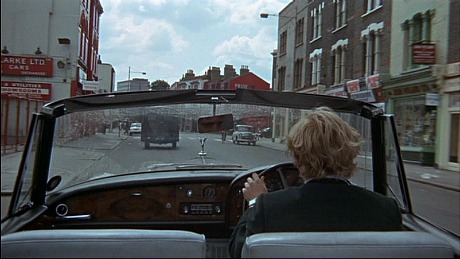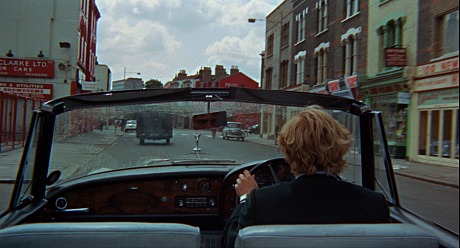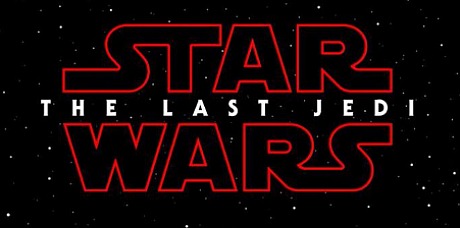Milo Yiannopoulos vs. Larry Wilmore (“You can go fuck yourself, all right?”) with Bill Maher moderating and Rep. Jack Kingston, Malcolm Nance and Leah Remini costarring.
Day: February 17, 2017
Son of No Man’s Land Meets 127 Hours
Yup, it’s the old “stepped on a land mine but can’t step off without being blown up” situation again. Bosnian director Danis Tanovic made this into something formidable 16 years ago in No Man’s Land, and now co-directors Fabio Guaglione and Fabio Resinaro have applied a slightly different spin with Mine. Instead of enemy combatants stuck in the same situation, Armie Hammer is more or less alone and facing terrible survive-or-die odds a la James Franco in Danny Boyle‘s 127 Hours.
Revised Letter to Criterion’s Peter Becker
Updated on Saturday, 2.18, at 7 am: Peter — I’ve just had a second look at the screen captures included in Gary W. Tooze‘s DVD Beaver review of Criterion’s 4K-scanned Blow-up Bluray (streeting on 3.28), and I’m feeling a bit foolish. Yesterday [i.e., Friday, 2.17] I wrote that it seemed obvious that Criterion’s decision to go with the dreaded 1.85 aspect ratio meant that extra information has been added to the sides. That may be the case, but the frame comparisons between an old DVD image and the new Criterion Bluray [below] didn’t prove anything as they were of different frames from a shot taken from the back of David Hemmings‘ moving car. Readers pointed this out last night — my bad.

From a domestic DVD released 14 or 15 years ago…something like that.

From Criteron Bluray — not the same shot.
The bottom line remains: The old Criterion organization stated on the back-cover notes for Criterion’s CAV laser disc of Michelangelo Antonioni‘s 1966 classic that the “correct” aspect ratio is 1.66. Why was 1.66 cool back then but not now? Or why not at least go with a 1.75 (which Criterion chose for its Bluray of A Hard Day’s Night) or 1.78 a.r.?
DVD Beaver‘s Gary Tooze says in his current review that the 1.85 a.r. will cause some anguish and consternation, and stated some years back that the film was definitely composed for 1.66.
I’ve stated time and again that 1.66 was a kind of default aspect ratio in England from the late ’50s to sometime in the early ’70s. Criterion’s Bluray of John Schlesinger‘s Sunday Bloody Sunday (’71), for one example, is perfectly masked at 1.66. It’s really such a shame. Back around the time of Criterion’s seminal, game-changing On The Waterfront video essay that compared the differences between 1.33 (or 1.37), 1.66 and 1.85, I thought that the case had been made that 1.85 croppings were too extreme and that 1.66 was a much more natural, liberal, eyes-of-God-and-the-universe aspect ratio. But no. 1.85 fascists are still embedded here and there, and I’m very sorry to admit that this pestilence persists.
On top of which Tooze’s observation that Criterion’s 1080p transfer is “darker than the previous DVDs, has warmer skin tones and a film-like thickness” is troubling. In what way is the look of a film enhanced by darkening the palette? Warming the color is okay within limits but why the hell would anyone want to deliver an image that looks like a screening with a dying projector bulb? And who pines for “film-like thickness”?
For the life of me I’ll never understand why the Criterion gremlins have chosen more than a few times to murk things up. The decision to go darker and inkier on Criterion’s Only Angels Have Wings Bluray was appalling — as an owner of a highly appealing Vudu HDX streaming version plus a TCM Bluray, I’ll never watch Criterion’s Bluray version again.
Question #1 — The adding of extra width to Criterion’s Blow-up Bluray may or may not be agreeable, but how do you explain Criterion staffers endorsing a 1.66 a.r. back in the ’90s vs. today’s team going for 1.85? (They couldn’t even compromise with a 1.78 a.r.?) Question #2: What’s with the darkness compulsion? — Jeffrey Wells, HE.
“I Don’t Have Anything Big To Say”
Michelle Williams owns this scene — feeds it, stirs it, delivers the lion’s share of the energy. All Casey does is deflect and dodge and slowly collapse, his character being who and what he is. But the two of them together….wow. The feelings seep out of Michelle while Casey mostly trembles and shudders…the sadness pours like sauce.
Beyond Meaningless
A few hours ago a Mashable post from Italian correspondent Gianluca Mezzofiore set the Stars Wars realm on fire…not. An Italian poster for Rian Johnson‘s Star Wars: Episode VIII — The Last Jedi (Disney, 12.15) suggests that the use of Jedi in this context could be plural. Seriously…who cares? We all know that movie and book titles using the adjective “last” always allude to a dying breed, the end of a tradition. And if you have even a limited understanding of what the force is, you know there never be a Jedi finale or cul-de-sac when everything explodes or collapses in a heap. Whether the “last Jedi” refers to (a) a generation of Jedi knights, (b) Daisy Ridley‘s Rey or (c) Mark Hamill‘s Luke Skywalker, finality doesn’t apply. In what way could Jedi-ism and the The Force be dying or running out of steam when it’s it an eternal cosmic current of incredible energy and wisdom for all Jedi knights? Absolutely 100% nonsensical bullshit.

All Those Years Ago
Six weeks ago I wrote that “if Broad Green wants anyone to talk about Terrence Malick‘s Song to Song (3.17) as a film of interest or possible excitement they’re going to have to assemble and release (gasp!) a trailer. And maybe even a one-sheet.” Today they finally released both. The trailer is nicely cut and thoroughly Malickian…that same old darting, dazzling, swirling Emmanuel Lubezki cinematography with a lot of wooing, nuzzling and giggling plus some keyboard playing and stage performing thrown in…a musical Son of Knight of Cups in Austin with a little relationship mood-pocketing from To The Wonder. Saying it again: this is a mid-Obama administration nostalgia flick (shot in 2011 and ’12) that nobody outside of Malick cultists could possibly care about. It’ll be world premiered on Friday, 3.10 at Austin’s South by Southwest film festival.
